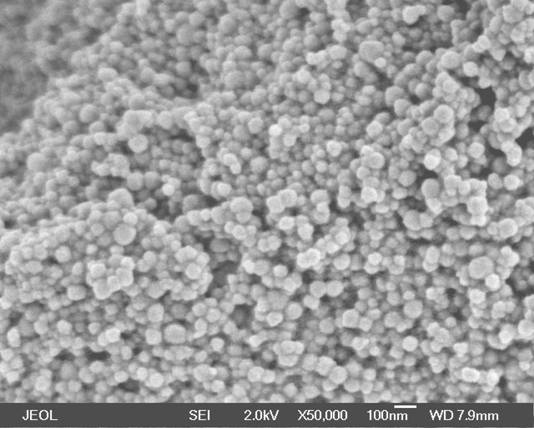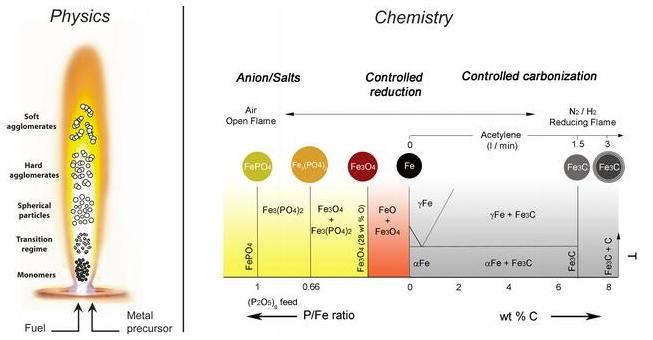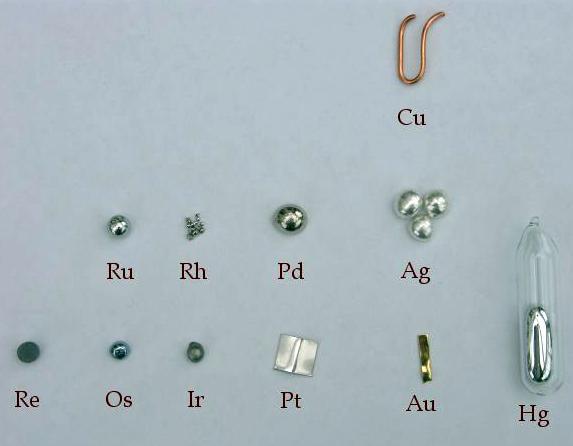What is Silver Nanoparticles ?
Silver nanoparticles are nanoparticles of silver, i.e. silver particles of between 1 nm and 100 nm in size. A common form of silver that is used to treat infections is silver nitrate. Recent advancement in technology has introduced silver nanoparticles into the medical field. As studies of silver nanoparticles improve, several silver nanoparticles medical applications have been developed to help prevent the onset of infection and promote faster wound healing.
 SEM of Ag/Cu Alloy nanopowder by Cima’s nanoparticles
SEM of Ag/Cu Alloy nanopowder by Cima’s nanoparticles
The coating of medical instruments is one recent silver nanoparticles medical application in study. A combination of the bacteriolytic action of lysozyme and biocidal activity of silver nanoparticles were synthesized together as a form of antimicrobial coating on medical instruments. These were applied to surfaces of stainless surgical steel blades and needles through an electrophoretic process. Bacterial cell destruction was reported on the areas where the surgical instruments coated with silver nanoparticles came in contact with. This means that the antibacterial properties of the silver nanoparticles were transferred to the surface where the surgical instruments came in contact with, while the same antibacterial properties were retained in the blades and needles.
Use of nanopartices in catheters is another example of a medical application for silver nanoparticles that is gaining popularity. A study entitled “Antimicrobial Surface Functionalization of Plastic Catheters by Silver Nanoparticles” was published in The Journal of Antimicrobial Chemotherapy (Roe et. al.) supported the value of using silver as a coating on catheters.
Growing silver nanoparticles. Silver nanoparticles form clusters of various shapes depending on thier growth conditions. This allows them to make inexpensive connectors for use in microcircuits - to connect one area to another.Image Source: Elshan Akhadov, Los Alamos National Laboratory.
Infections due to catheter use are common in hospitals, especially when it comes to in-dwelling catheters. A silver coating was proven to be effective against methicillin-resistan Staphylococcus aureus (MRSA), a common pathogen that causes infections in surgical sites. The cited study observed the action of microbial and biofilm formations in catheter-related infections. A layer of sustained-release silver nanoparticles were applied on the catheters that emit antimicrobial properties for a 10-day period. Major in vitro antimicrobial activity was noted in the coated catheters, as well as inhibition of biofilm formation of several strains of bacteria including Escherichia coli, Enterococcus, Staphylococcus aureus. Among silver nanoparticles medical applications which may soon hit hospitals is in the treatment of face masks to give them antimicrobial properties.
Face masks in hospitals have all the necessary elements for bacterial proliferation. Masks treated with silver nanoparticles even at low concentrations were proven to be effective against any bacteria that attach themselves to the surface of the mask, including Staphylococcus aureus and Escherichia coli. The use of silver nanoparticles along with other antimicrobial agents will help prevent the formation of resistant bacterial strains. During the study, it was observed that the presence of serum has an effect on the antimicrobial property of silver nanoparticles by resulting in a slight inhibition of the property.
Silver Nanoparticles in Vivo
The success of silver nanoparticles against bacterial growth is due to the damage of the plasma membrane or bacterial enzymes. To ensure a uniform coating of silver nanoparticles on the mask, oleophobol C was added. Oleophobol C contains no antimicrobial properties, thereby not affecting the antimicrobial action of silver nanoparticles.
There are many different synthetic routes to silver nanoparticles. Although it may seem counter-intuitive, ion implantation has been used to create silver nanoparticles. There are several wet chemical methods for creating silver nanoparticles. Typically, they involve the reduction of a silver salt such as silver nitrate with a reducing agent like sodium borohydride in the presence of a colloidal stabilizer. Polydopamine coated magnetic-bacterial cellulose contains multifunctional groups, which acts as a reducing agent for in situ preparation of reusable antibacterial Ag-nanocomposites . Citrate and cellulose have been used to create silver nanoparticles independent of a reducing agent as well.
In this picture, arrows point to silver nanparticles attaching themselves to bacteria.”Inside every silver lining there’s dark cloud.” — George Carlin
A common form of silver that is used to treat infections is silver nitrate. Recent advancement in technology has introduced silver nanoparticles into the medical field. As studies of silver nanoparticles improve, several silver nanoparticles medical applications have been developed to help prevent the onset of infection and promote faster wound healing.
The coating of medical instruments is one recent silver nanoparticles medical application in study. A combination of the bacteriolytic action of lysozyme and biocidal activity of silver nanoparticles were synthesized together as a form of antimicrobial coating on medical instruments. Bacterial cell destruction was reported on the areas where the surgical instruments coated with silver nanoparticles came in contact with. A study entitled “Antimicrobial Surface Functionalization of Plastic Catheters by Silver Nanoparticles” was published in The Journal of Antimicrobial Chemotherapy (Roe et. al.) supported the value of using silver as a coating on catheters.
Scientists from the University of Washington, US, have used chemical synthesis to make single-crystal silver nanocubes of between 50 and 175 nm in size. They employed the nanocubes as templates for creating hollow gold nanoboxes.
A silver coating was proven to be effective against methicillin-resistan Staphylococcus aureus (MRSA), a common pathogen that causes infections in surgical sites. The cited study observed the action of microbial and biofilm formations in catheter-related infections. A layer of sustained-release silver nanoparticles were applied on the catheters that emit antimicrobial properties for a 10-day period. Among silver nanoparticles medical applications which may soon hit hospitals is in the treatment of face masks to give them antimicrobial properties.
Masks treated with silver nanoparticles even at low concentrations were proven to be effective against any bacteria that attach themselves to the surface of the mask, including Staphylococcus aureus and Escherichia coli. The use of silver nanoparticles along with other antimicrobial agents will help prevent the formation of resistant bacterial strains. During the study, it was observed that the presence of serum has an effect on the antimicrobial property of silver nanoparticles by resulting in a slight inhibition of the property.
The success of silver nanoparticles against bacterial growth is due to the damage of the plasma membrane or bacterial enzymes. To ensure a uniform coating of silver nanoparticles on the mask, oleophobol C was added. Oleophobol C contains no antimicrobial properties, thereby not affecting the antimicrobial action of silver nanoparticles.
Silver Nanoparticles Applications :
Silver nanoparticles are one of the most commonly utilized nanomaterials due to their anti-microbial properties, high electrical conductivity, and optical properties.
Medical Applications
Silver nanopaticles are widely incorporated into wound dressings, and are used as an antiseptic and disinfectant in medical applications and in consumer goods. Silver nanoparticles have a high surface area per unit mass and release a continuous level of silver ions into their environment. The silver ions are bioactive and have broad spectrum antimicrobial properties against a wide range of bacteria. By controlling the size, shape, surface and agglomeration state of the nanoparticles, specific silver ion release profiles can be developed for a given application.
Conductive Composites
Incorporation of silver particles into plastics, composites, and adhesives increases the electrical conductivity of the material. Silver pastes and epoxies are widely utilized in the electronics industries. Silver nanoparticle based inks are used to print flexible electronics and have the advantage that the melting point of the small silver nanoparticles in the ink is reduced by hundreds of degrees compared to bulk silver. When scintered, these silver nanoparticle based inks have excellent conductivity.
Plasmonics
Silver nanoparticles have unique optical properties because they support surface plasmons. At specific wavelengths of light the surface plasmons are driven into resonance and strongly absorb or scatter incident light. This effect is so strong that it allows for individual nanoparticles as small as 20 nm in diameter to be imaged using a conventional dark field microscope. This strong coupling of metal nanostructures with light is the basis for the new field of plasmonics. Applications of plasmonic silver nanoparticles include biomedical labels, sensors, and detectors. It is also the basis for analysis techniques such as Surface Enhanced Raman Spectroscopy (SERS) and Surface Enhanced Fluorescent Spectroscopy.
Photovoltaics
There is increasing interest in utilizing the large scattering and absorption cross sections of plasmonic silver nanoparticles for solar applications. Since the nanoparticles act as efficient optical antennas, very high efficiencies can be obtained when the nanoparticles are incorporated into collectors.
Problematic new findings regarding toxicity of silver nanoparticles
Engineered nanoparticles are rapidly becoming a part of our daily life in the form of cosmetics, food packaging, drug delivery systems, therapeutics, biosensors, etc. A number of commercial products such as wound dressing, detergents or antimicrobial coatings are already in the market. Although little is known about their bio distribution and bio activity, especially silver nanoparticles are extensively used for all kinds of antimicrobial applications. Ultimately, these nanoparticles end up in the environment during waste disposal. Largely due to a scarcity of data on the toxicity, intracellular distribution and fate of silver ions and nanoparticles inside an organism, regulatory bodies so far have not felt the need to regulate the use of such materials in commercial products or disposal of such products
The nanoparticles employed in our study were highly stable and water soluble. Transmission electron microscopy (TEM) of the Ag-BSA treated embryos showed a significant concentration of nanoparticles inside the nucleus. The pathological events following long-term deposition of nanoparticles in the nervous system and other organs remain unclear.
Furthermore, the exposure of silver nanoparticles resulted in accumulation of blood in different parts of the body, thereby causing edema and necrosis. Also, understanding the nanoparticle-biomolecule interactions can be used for developing potential drug candidates as well as drug delivery systems for various diseases, using low concentrations of these nanoparticles.
You might also like
| What is Silver? Silver is a metallic chemical element... | What is Nanoparticle ? Nanoparticles are particles that have one... | Magnetic Nanoparticle When a piece of a magnetic material is made... | Nobel Metal Processing Nobel Metal Processing - Overview Noble... |




 Alloy Suppliers
Alloy Suppliers
 Aluminum
Aluminum
 Aluminum Extrusions
Aluminum Extrusions
 Copper-Brass-Bronze
Copper-Brass-Bronze
 Nickel
Nickel
 Magnets
Magnets
 Stainless Steel
Stainless Steel
 Stainless Steel Tubing
Stainless Steel Tubing
 Steel Service Centers
Steel Service Centers
 Titanium
Titanium
 Tungsten
Tungsten
 Wire Rope
Wire Rope